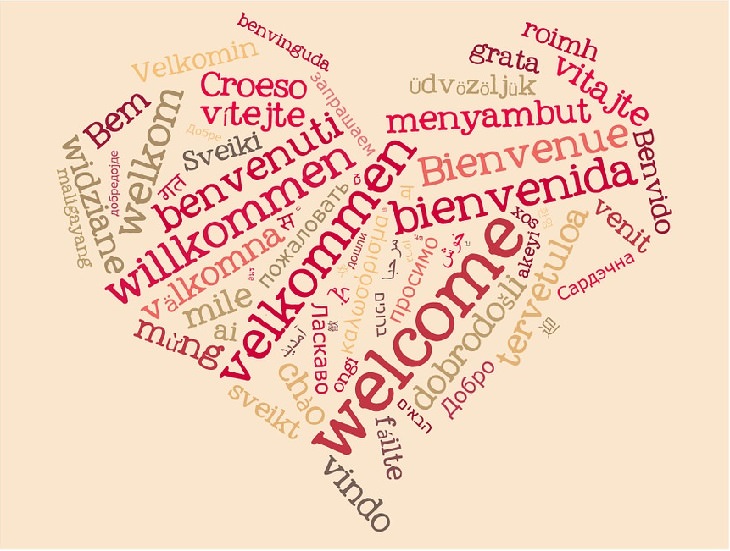
Do you speak the same language as your spouse? One sends flowers, but what the other really wants is just to sit and talk, just as one wants a hug and the other cooks a home-cooked meal. The problem is not in your affection, but in the languages of love that anthropologist Dr. Gary Chapman has articulated.
In his book “Five Love Languages,” Chapman expands on this interesting issue and explains how to bridge the gaps in understanding the languages of love between partners. The book, which has sold more than 11 million copies worldwide and has been translated into 50 languages, gives us the ability to understand the different languages of love and to know how to use them with our partners. Discover what your love language and your partner's language is, and how you can understand and use it to strengthen and possibly improve your relationship.

Just like people speak all sorts of languages, people speak different languages of love. Everyone has their own natural language of love, which they speak and understand best, along with their second language (or languages) with which they feel comfortable, but aren’t very knowledgeable about. There may be a situation in which partners love each other, but in the same breath, each one will feel unloved because giving and receiving love is expressed differently by each of them. That is, they don’t share the same language of emotional and natural love.
When we accept our natural language of love, our "love jar" fills up and we feel loved, but when we receive a different language of love, then everything gradually empties out and we feel unloved - a problematic situation that can create tension in the relationship. In order to maintain an ongoing and loving relationship, we must learn to speak in our partner's natural language of love. When their "love jars" are full, they can reward us with great love.

Dr. Chapman argues in his book that one of the ways to express love is to use words that encourage and strengthen, making words of affirmation are one of the five basic and natural languages of love. We all understand and appreciate the tremendous power words have "You look great in this dress," "I love how you always pick me up on time," "You always make me laugh" etc.
This language has a wide range of "dialects" but the common denominator is the use of words to build up your spouse, which is how the deep human need to feel appreciated is fulfilled. If your partner speaks this language of love, you can make small gestures like leaving a small note on the dresser with words of reinforcement and love, a picture of the two of you with an encouraging message on the back, a heart-shaped red balloon waiting for them at the entrance of your home, and more.

In the book "The Five Love Languages," Dr. Chapman explains that the quality time means giving our partners our full attention. Chapman continues and gives an example of a situation in which both spouses sit together and watch television - in this case, the quality time is not taking place because one or both parties are paying attention to the screen. Therefore, you have to sit on the couch with the TV turned off, remove any distracting devices, look at each other and just talk – give your full attention to one another.
Another option is to go for a walk and/or go to a restaurant, to look at each other and just talk, time is a very precious commodity and we all have many demands from it, If your partner's language of love is "quality time," it means that they simply want you to be with them and spend your time together.

Most of the things written about the subject of love claim that it is in the spirit of giving. While all the languages of love challenge us to give our partners love in different ways, to some people, receiving gifts and outward symbols of love is even more meaningful - this is probably their natural language of love. A gift is something you can hold in your hand and say "Look, she thought about me" - the gift itself is actually just the symbol of that thought.
For those of you thinking to yourself, “but I'm not good at picking out gifts,” you made your first discovery: You found that you do not speak the language of receiving gifts and you have to no work on this skill. If your partners speak the love language of receiving gifts, making an effort towards understanding and speaking this language will help make you a better couple.

According to the book "The Five Love Languages," acts of service is one of the tangible languages through which we do things that we know our partners want us to do. We seek to please them by providing a service, to express our love by performing special actions and tasks just for them.
Consider simple actions such as cooking a meal, setting the table, emptying the dishwasher, taking out the trash, vacuuming, changing a diaper, washing the car, and so on. These things require thought, planning, time, effort and energy and if they are done with a positive attitude, they are expressions of love. There are many great benefits when you meet the emotional requirements of your partners, and if they speak the language of acts of service, then know that your actions speak louder than your words.

